
This website outlines the steps to create an Australian Aboriginal Dot Art project.
- Subject:
- Arts Education
- Visual Arts
- Material Type:
- Activity/Lab
- Date Added:
- 09/29/2020

This website outlines the steps to create an Australian Aboriginal Dot Art project.
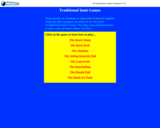
Some grade six students at Aqsarniit School in Iqaluit, Nunavut did a project on some of their favorite Traditional Inuit Games (phys. ed. type activities). They hope other students will learn how to play some of them where they live. The games are:
The Kneel Jump
The Back Push
The Airplane
The Sitting Knuckle Pull
The Legwrestle
The Knucklehop
The Mouth Pull
The Musk Ox Push

Lamarr Oksasikewiyin provides traditional games for developing number sense with early learners. Lamarr created a series of Facebook videos with a focus on number games, number concepts, and traditional ways of knowing. A Facebook account is not required to view.
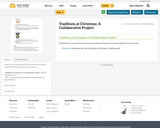
Action Plan: To communicate with a school in Scotland and compare Christmas
traditions in each country

Aristotle. He knows a lot, right? And if you choose to believe Aristotle, then you must believe all the mechanics of tragedy that Mike is about to lay on you. This week, we're looking at Aristotle's rules for the basic elements of theater, and how those can be used to bring about catharsis, the emotional release triggered by onstage trauma. You know you love the catharsis.

The Trans-Canadian Research and Environmental Education (TREE) project is a citizen science program where students from across Canada join with researchers from the Mistik Askîwin Dendrochronology Lab (MAD Lab) to learn about the stories trembling aspen trees tell and how a synchrotron can be a tool to tell that story. Join us as we explore this new area in research and learn about environments across Canada!
From a scientific perspective with TREE, trembling aspen (Populus tremuloides) are a species of tree that is abundant throughout most of Canada. They also tolerate, even thrive, with much higher levels of toxins in their soil than most other species of trees and can potentially be used to remediate contaminated sites.
From an educational perspective, learning about the life and nutrient cycles of trees, nutrients in soil, and tracking effects on trees over time provides a wealth of opportunity for student education. The TREE program connects with curriculum across several subject areas and grade levels. It provides an interdisciplinary learning experience for students, including local Indigenous knowledge related to the trees, history, and the environment.
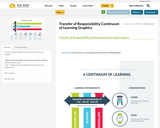
Transfer of Responsibility & the Continuum of Learning Graphics

Transportation French

Everyone benefits when there is a greater understanding and appreciation of Treaties and the Treaty relationship.
This issue of Canada’s History explores the history of Treaties and the Treaty relationship and is an important first step in sharing First Nations perspectives.
It has been developed with contributors who have helped to incorporate the spirit and intent of Treaty making. The contributors, drawn from across the country, bring expertise and insights that help us to understand the continuing relevance of Treaties and the Treaty relationship.
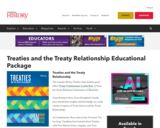
Treaties and the Treaty Relationship
The Canada’s History Treaties issue features guest editor Treaty Commissioner Loretta Rosslink opens in new window from the Treaty Relations Commission of Manitoba.
Contributing writers, from throughout Canada, have shared their insights and knowledge on a wide variety of aspects of Treaty history and the Treaty Relationship.
As Commissioner Ross states in her Forward: “For too long, Canadians have learned about Treaties with First Nations from a singular, non-First Nations perspective. The goal of this special issue is to try to provide a more balanced understanding of Treaties and the Treaty relationship.”
In addition to this special edition of Canada’s Historylink opens in new window that you can download as a PDF, you can also access the Educator’s Guide.

Treaties and the Treaty Relationship Educational Package.
Visit the site to download the information.
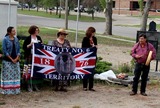
On August 30, 2022, a Flag Ceremony was held at the Sun West Learning Centre in Rosetown to welcome the Treaty 6, Treaty 4 and Métis Nation flags to Sun West School Division. Welcoming the flags to the Sun West Learning Centre, which is directly adjacent to the Sun West Division Office, recognizes that Sun West is on Treaty territory as well as the School Division’s commitment to the Calls to Action of the Truth and Reconciliation Commission, in particular those that relate to education. The Flag Ceremony was held in conjunction with the first Sun West Administrators Meeting (Principals and Vice-Principals) of the 2022-23 school year and so the Administrators of all of Sun West’s schools participated. Most Sun West schools are within Treaty 6 Territory except for Davidson and Loreburn Central Schools that are in Treaty 4 Territory. The entire school division falls within the Métis Nation Homeland.

Students activities and teacher resources developed by the Treaty 4 Student Activity Committee and Partners.
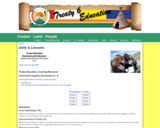
Living Sky School Division teachers and consultants share their units and lessons that highlight Treaty Essential learnings. The resource list will continue to grow over time. We welcome your feedback and contributions to this collection of units.
Grade 1 - 7 Plains Cree Hand Drumming Overview
Grade 3 - Lifestyle changes after signing treaty unit
Grade 4 - Residential Schools unit
Grade 4 - Whose Voice? The Conquerors unit
Understanding worldview when learning about the treaties. Use drama and role play to create scenarios with the real characters from history. (Arts Ed/ELA/Treaty Ed)
Grade 5 - 12 - Response to Art viewing sheet with discussion, background and activity
Video with artist talking about her art work about residential schools
Grade 5 – Social Studies - Canada and Aboriginal Heritage unit
Review: Jeopardy Game
Grade 6 – ELA – Heroes/Models/Peacemakers unit
Grade 6 – Arts Education – Métis Identity & Jigging unit
Grade 7 – Ecosystems & Indigenous Knowledge: “Healing Garden”unit
Sacred Plants (3 min. audio file: Oral Storytelling, from CBC Re/Vision Quest podcast "Elders")
Grade 8 – Social Studies - We Are All Treaty People unit

TREATY VOCABULARY
The following is a list of words to help students understand the concept of the Treaty
relationship. Using the words and the sentences provided, have students explore and express
their understandings in the blank area. They may be instructed to write their understanding
of the sentence, to draw a picture or symbolic representation, and/or write or draw their own
analogies or metaphors. Encourage the students to share their work with each other.
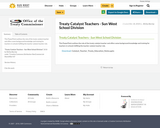
This PowerPoint outlines the role of the treaty catalyst teacher and offers some background knowledge and training for teachers in schools fulfilling the teacher catalyst teacher role.
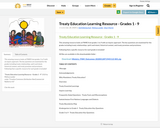
This amazing resource looks at FNME from grades 1 to 9 with an inquiry approach. The key questions are examined for the grades including treaty relationships, spirit and intent, historical context, and treaty promises and provisions.
Following that a specific resource for each grade is included!
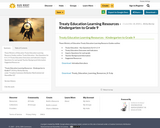
These Ministry of Education Treaty Education Learning Resource Guides outline:
Treaty Education - Key Questions for K-4, 5-9
Treaty Education Outcomes and Indicators
Inquiry Questions for each grade
Teacher Background Information
Suggested Resources
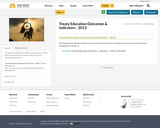
This Saskatchewan Ministry of Education documents outlines all of the Treaty Education outcome and indicators for Kindergarten to Grade 12.

Treaty Education
Outcomes and Indicators
Saskatchewan Ministry of Education
2013